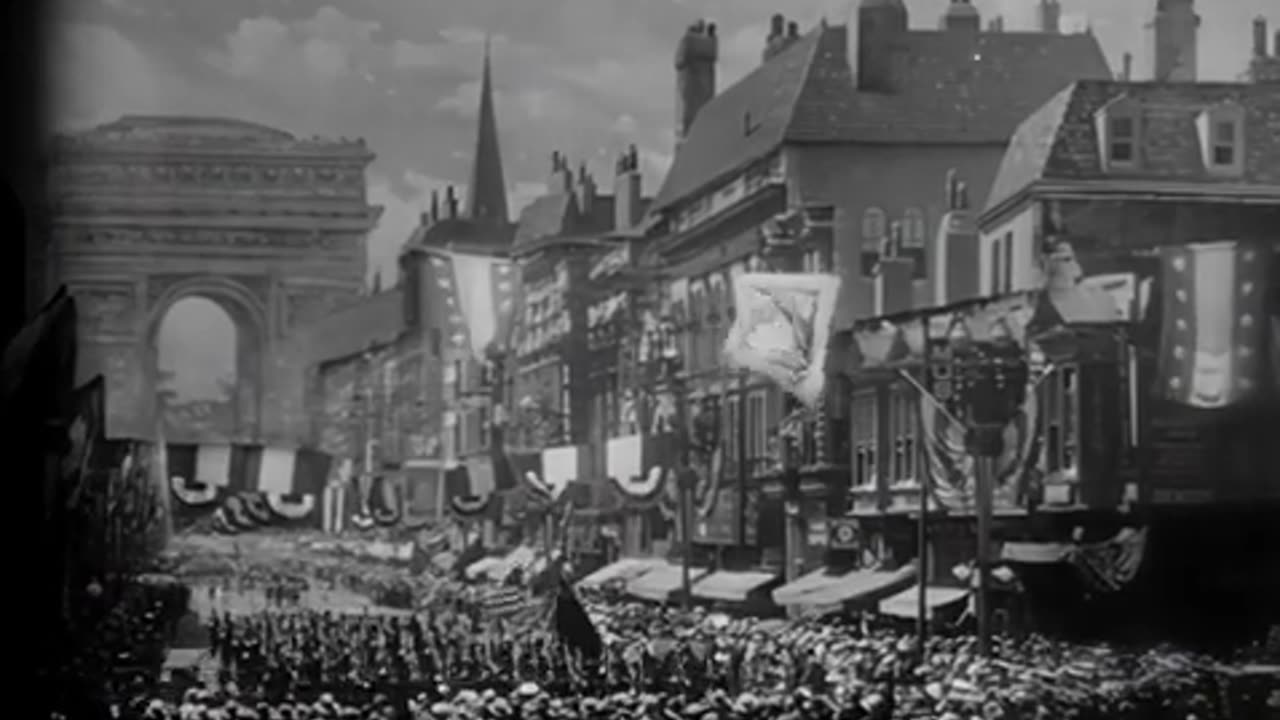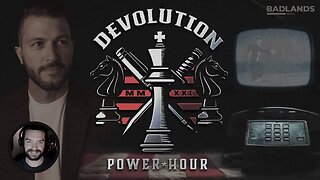Premium Only Content

Noah's Ark (Silent Drama, 1929)
Noah's Ark is a hybrid film, blending silent epic, romantic drama, and war film elements. It’s part biblical spectacle, part World War I melodrama, with a dash of early sound experimentation, making it a transitional piece between silent cinema and talkies. The grandiose flood scenes and religious undertones align it with the historical/religious epic genre popular in early Hollywood.
Plot
The movie weaves two parallel stories. The modern segment is set during World War I, where Travis (George O’Brien), an American soldier, meets and falls in love with Marie (Dolores Costello), a German girl working as a performer. Their romance unfolds amid wartime chaos, including a thrilling train wreck caused by sabotage and a subplot involving espionage. Travis marries Marie in secret, but she’s later accused of being a spy and sentenced to death. As the war rages, the story abruptly shifts to a biblical narrative.
In the ancient segment, the same actors play different roles: Travis becomes Japheth, a son of Noah, and Marie is Miriam, a young woman facing sacrifice by a pagan king, Nickoloff (Noah Beery Sr.), who also plays a villain in the modern story. God commands Noah (Paul McAllister) to build an ark as a flood looms to punish humanity’s wickedness. Japheth rescues Miriam from execution, and the flood arrives in a dramatic deluge, washing away the sinners. The film loosely ties the war’s destruction to the biblical flood as twin tales of human folly and redemption, though the connection is more stylistic than thematic.
Cast
Dolores Costello as Marie/Miriam: A silent film star known as “The Goddess of the Silent Screen,” she brings charm to both the modern ingenue and biblical heroine.
George O’Brien as Travis/Japheth: A rugged leading man, he shifts seamlessly from soldier to Noah’s loyal son.
Noah Beery Sr. as Nickoloff/Aaron: A veteran character actor, he plays dual villains—a Russian agitator in the war story and a sinister king in the biblical tale.
Paul McAllister as Noah: He portrays the patriarch with gravitas, overseeing the ark’s construction.
Guinn “Big Boy” Williams as Al/Ham: A supporting player adding muscle to both narratives.
Directed by Michael Curtiz, who’d later helm classics like Casablanca (1942), and produced by Warner Bros.
Awards
Noah's Ark didn’t win any major awards, as the Academy Awards were in their infancy (first ceremony was in 1929). However, it was a commercial success and critically praised for its technical achievements, particularly the flood sequence. Its legacy lies more in its influence on epic filmmaking than in formal accolades.
Fun Facts
Dangerous Flood Scene: The climactic flood was created using 600,000 gallons of water unleashed from massive tanks. Several extras were injured, and rumors persist (though unconfirmed) that some drowned, highlighting the era’s lax safety standards.
Silent-to-Sound Hybrid: Released in 1928, it featured synchronized music, sound effects, and a few spoken lines, reflecting Hollywood’s shift to talkies. Some prints are fully silent, depending on theater equipment at the time.
Real Animals: Hundreds of animals—elephants, lions, camels—were used for the ark scenes, making it a logistical nightmare but visually authentic.
Dolores Costello’s Stunt: Costello reportedly did her own stunts in the flood, getting battered by water, which added realism but took a toll on her.
Lost Footage: The original 135-minute version is mostly lost; surviving cuts run about 75-100 minutes, with some scenes reconstructed from stills.
Noah's Ark is a wild ride—ambitious, messy, and a testament to early cinema’s boldness.
-
 7:40
7:40
Silver Screen Echoes
23 days agoBars and Stripes Forever (Cartoon, 1939)
85 -
 LIVE
LIVE
Lofi Girl
3 years agolofi hip hop radio 📚 - beats to relax/study to
248 watching -
 36:57
36:57
The Pascal Show
1 day ago $0.51 earned'THERE'S NOTHING TO HIDE?!' Trump SUDDENLY Urges House Republicans To Vote Release Epstein Files
1.87K1 -
 2:50:17
2:50:17
FreshandFit
13 hours agoClavicular Rates The Entire Panel’s Looks & They Get TRIGGERED
302K107 -
 2:22:44
2:22:44
Badlands Media
14 hours agoDevolution Power Hour Ep. 408: Immigration Panic, Epstein Optics & the Narrative Unraveling
103K24 -
 2:06:57
2:06:57
Inverted World Live
8 hours agoBigfoot in Idaho & Insect-Based Bioweapons | Ep. 144
92.9K5 -
 4:02:49
4:02:49
Akademiks
6 hours agoMeg Thee Stallion Back LYING again? Offset vs Finesse2x. 6ix9ine house robbed.. HERES WHO DID IT
42.2K2 -
 2:57:51
2:57:51
TimcastIRL
8 hours agoGOP Rep Threatens Hillary Clinton With CRIMINAL CHARGES Over Epstein | Timcast IRL
268K107 -
 2:36:45
2:36:45
Laura Loomer
8 hours agoEP157: Marjorie TRAITOR Greene Turns On Trump
48.1K104 -
 1:35:44
1:35:44
Tucker Carlson
8 hours agoWhy Is Nick Fuentes So Popular? Nikki Haley's Son Explains.
102K565